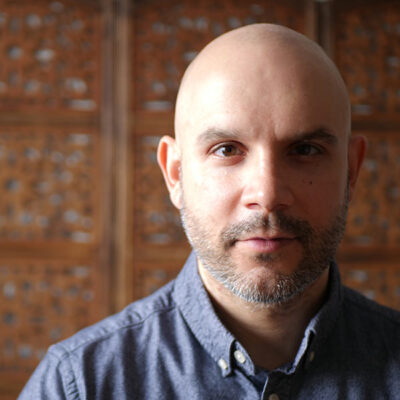Everything I Know About Leadership I Learned From The Blueprint (6 Tenents)
So you finally got your big promotion. You’ve moved up from top designer to become the manager of a whole team of talented designers. But now—you’re forced to learn a skillset on the fly which you’ve not previously considered essential: leadership.
Thankfully, accomplished leaders often pay their success forward by writing books. Former Nabisco CEO Douglas Conant (with Amy Federman) has left a crumb trail of leadership lessons in the book, The Blueprint: 6 Practical Steps to Lift Your Leadership to New Heights. This half-workbook-half-manifesto contains a myriad of tips, tricks, and practices to get you leading and inspiring like Martin Luther King, Abraham Lincoln, or more importantly—like your own authentic self with your own unique style.
Here are some main takeaways from the book to help with your leadership acumen:
1 – Be Authentic
Conant starts off the book with a personal story of being fired from his first middle management position at a big firm, and struggling in his subsequent job search. A outplacement consultant changed Conant’s life when he pointed out something: the persona that Doug had on display in job interviews was NOT the real Doug—and that was why he was having trouble finding a new position. As Conant put it, “I wasn’t forging connections with people because they were never really meeting the real me. I had been hiding without even realizing it.”
The Blueprint will put you through the paces of some extensive yet fruitful writing exercises (if you take them seriously).
First you’ll envision the future you want to create as a leader. Then, you’ll dig deep into your past to uncover your greatest successes and failures and discover your true character. Once you know who you are, you can then do the next, potentially nerve-wracking step: “Declare Yourself” to your colleagues.
2 – Declare Yourself
Declaring yourself is simple: you’ve decided who you’ll be, now hold yourself accountable by telling your teammates who you’ve committed to be. Conant says, “In the spirit of giving people words to measure your actions against, once you have landed on some parameters, it is important to share those guidelines with others. Ideally, you should communicate how you will act. Then follow through.”
This second step is why the first step is crucially important: if you don’t know who you are and what you stand for, you can’t explain it to anyone else. However, once you have declared yourself, you need your behavior to match your words.
3 – Do What You Say You Will Do
The rubber meets the road in Step 3: can you back up your talk with some action? Conant illustrates this step with a story about when he took over at Campbell Soup Company. The aging corporate campus was in disrepair—with crumbling walls and peeling paint—and employees were unhappy about it.
Since Doug had declared himself as someone who listens and addresses employee concerns, “Quickly, we began making physical changes: razor wire was removed, overgrowth was cleared, walls were repainted. These improvements (among other people-focused initiatives) immediately led to an uptick in employee engagement. Performance and retention began to improve. A virtuous circle began to take shape. As I listened to people and took action in response to that listening, I earned confidence…”
He goes on to says that you should focus on a key area and make marked progress before moving onto address other issues. Maintaining focus on an important issue instills confidence that you will get the job completed in a timely manner.
Once you have shown that you will go the extra mile for your employees, naturally they will reciprocate. Whenever individuals on your team do go above and beyond, it is important to show your gratitude.
4 – Send Thank You Notes
Doug says, “When I retired from Campbell, I calculated that I had written over 30,000 notes to people at every level, in every imaginable department…”
Those notes he is talking about are all hand-written. Conant realized early on in his career how much of an impact that a thoughtful greeting card could have on a relationship. He built the action of writing notes into his Leadership Model, a visual representation of his best practices for leading authentically.
Who has done something helpful you recently? Could you pop off a quick hand-written note to them today?
Maybe you will include thank-you notes as an action in your Leadership Model, but maybe not. You’ll identify the unique values that you find most important in the next step.
5 – Have a Visual Leadership Model
Doug spent years refining his Leadership Model. The model is not abstract, it is an actual drawing.
For your model, choose a physical shape with meaning for you. Your Leadership Model could be in the shape of a house or a mountain. There are as many leadership models as there are leaders. Doug says, “One doctor in my class used the human body because he related to the framework of anatomy. Another participant who was a devoted yogi used chakras for his leadership model. Many people connect to the idea of a road or path as it conveys the perpetual promise and forward motion of their leadership journey.”
To create your Leadership Model, make a list of beliefs you have about great leadership, then ask yourself, “How am I going to advance my leadership purpose and honor my leadership beliefs? To help add texture to this question, think of it this way: Advancing your purpose is about how effective you will be. Honoring your beliefs is about how authentic you will be.”
You will then choose six or seven of those most important belief and one corresponding action for each belief, and arrange them in the shape you’ve chosen for your Leadership Model. Doug chose a flywheel for his model and placed writing thank you notes under “Build Vitality.”
The book provides a number of detailed examples to help you move forward on this, but remember that you don’t have to get it perfect on the first draft. Your Leadership Model drawing is something that you will continually refine in what Conant describes as a lifelong process.
6 – Adopt a Growth Mindset
Just like any other skills we want to perfect in life, leadership takes constant practice, feedback, and adjustment to be mastered. Doug suggests adopting a growth mindset in order to continue to improve as a leader. He writes that a growth mindset “is a phrase coined by researcher and psychologist, Carol Dweck. In simple terms, people with a growth mindset believe that intelligence can be developed and improved. It’s a fundamental belief in the ability to get better.” Conant says that the most important thing to do is internalize the growth mindset. He suggests,
“To make the lessons in this step real and to internalize the growth mindset, you have to keep this one urgent question at the top of your mind: How can I do better?”
That continuous striving to do better is backed up by all of the work contained in The Blueprint, and Conant continually reminds us that we must work through the whole blueprint, then start over again at the top—continuously—for the duration of our leadership career. He admits that sometimes life will drag us a way from our principles for months at a time, but assures us that as long we commit to coming back to the blueprint whenever we can, we will continue to improve.
The Workbook
The Blueprint is not a book that can be passively read and enjoyed with minimal effort. You will probably fill a whole notebook with writing by the time you are done with your first reading.
For your convenience, Conant has created a PDF workbook (free with your purchase of the book), that you may use as a you go through the book. I personally did all the exercises in a single Notes document, and you can use your creativity to find a system that works best for you.
If you’re serious about becoming a better leader, start The Blueprint as soon as possible. Get your ideas down in the workbook so that the next time you hold a team meeting at your agency, you can declare yourself to your squad. If you are a first-time leader, maybe you declaration will be as simple as telling them about your commitment to eventually being a great leader. Your team will likely respect your growth mindset, and you’ll be well on your way to leading and inspiring the way you envision in your personal blueprint.
Looking for more ways to develop your own transformational leadership style? Check out our blog post on creative leadership inspired by the 2016 Cubs.





